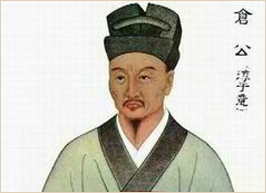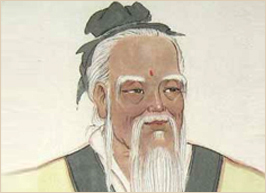 |
Chun Yi and his disciples were followers of "Bien Chue" school during the Western Han Dynasty (202 B.C. - 9 A.D.).
Chun Yi recorded data about all patients and published “Collection of medical records”.
Chun Yi and his disciples were followers of the “Bien Chue” school during the Western Han Dynasty (202 BC – 9 AD). In the “Historical Records” is a record about Bien Chue:
Medical theory and treatment methods of Bien Chue were very systematic and effective, Bien Chue followers studied just these methods, they should not have to change these practices, but simply follow them. Chang Gung (Chung Yi) was very successful in this practice.
|
 |
Fu Wen, Cheng Gao, Guo Yu – were doctors of "Bien Chue" school during Eastern Han Dynasty (25 -220 AD). "The Book of the last Han" describes: "There was an old man who loved to fish on the river bank. No one knew his name, and he was called Pei Wen (Pei - the name of the river, Van - the old man). This man was a folk healer, he was able to skillfully put needles and heal patients. He has written two books: "The Canon of Acupuncture" and "Method of pulse diagnosis". Cheng Gao was a student of Fu Wen. "The Book of the last Han" describes: "Cheng Gao was in search of a few years, until he was accepted by Fu Wen. Gao did not want to be famous and to be an officer, he was a popular doctor and his student became official. Thus we see that they were doctors from the people. Guo Yu was a student of Cheng Gao. "The Book of the last Han" describes: "Guo Yu in his youth studied medicine and Taoist practice in Chen Gao, in 80-105 A.D. he was the Minister of Health. He has achieved excellent results in the treatment".
|
In the history of medicine there are so many famous and successful scientists, there are so many doctors from the people. In the history of Traditional Chinese medicine the period of the Northern and Southern Dynasties (420-589) was the most prolific on number of doctors, on known generations of doctors and the number of written works. From 7 generations of the family Xu came 12 famous doctors, among them Xu Daodu, Xu Venbo, Xu Chenbo, Xu Dzhitsay, Xu Dzhifan. They served in the Imperial palace and studied at the Imperial School of Medicine, highly respected by emperor.
The first doctor in the family Xu was Xu Xi, who loves the art of Lao Tzu and the Yellow Emperor, the retirement in the mountains. One day Taoist monk passed by him and asked him for water for drinking, leaving him with a pumpkin, he said, "Let your kids use this thing in a pumpkin to save other people, it will be a decent reward”. Xu Xi opened the pumpkin and found in it the "Mirror canon Bien Chue”. Since then, he has devoted himself to the study of medicine and later in life became a famous doctor.
Starting with the Tang Dynasty (618-907), representatives of "Bien Chue" school becomes less. During the Jin Dynasty (960-1279) was another historic turning point in medicine, again, there was the development of the school. For example, a respected physician Xu Xi has specialized in the treatment of diseases with help of acupuncture and he cured the Emperor, for which he received large gifts from him and told him that went to pray and thank their teacher Bien Chue.
In the period of Song Dynasty during the reign of Emperor Shen Zones and Jae Sohn (1068 - 1100) a famous doctor Pan An said: "If compare the works of the Yellow Emperor and Bien Chue, it can be said that over the world the most profound knowledge had Bien Chue" (record "Song Stories, Biography of Ana Pan").
During the Southern Song Dynasty (1127 -1279 ) Dow Tsai was born in a family of doctors and studied with traditional healers, based on his knowledge and experience of 40 years he wrote the "Book of the heart Chue Bien" (1146 B.C.).
Over the years, the activities of the followers of "Bien Chue" school is becoming less prominent, and followers are lost among the people, become mentors for a narrow circle of students, transfer the knowledge to sons inherited or carry there knowlege to the grave.
|
